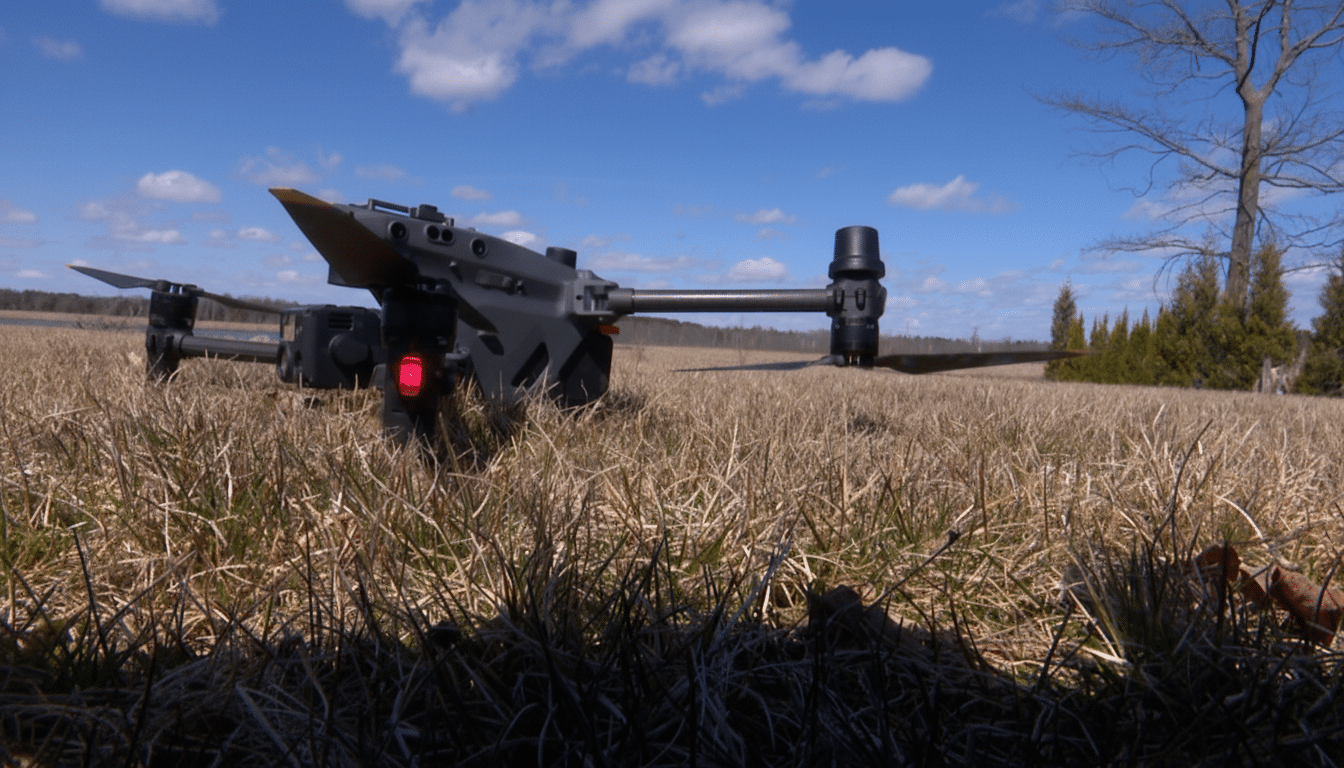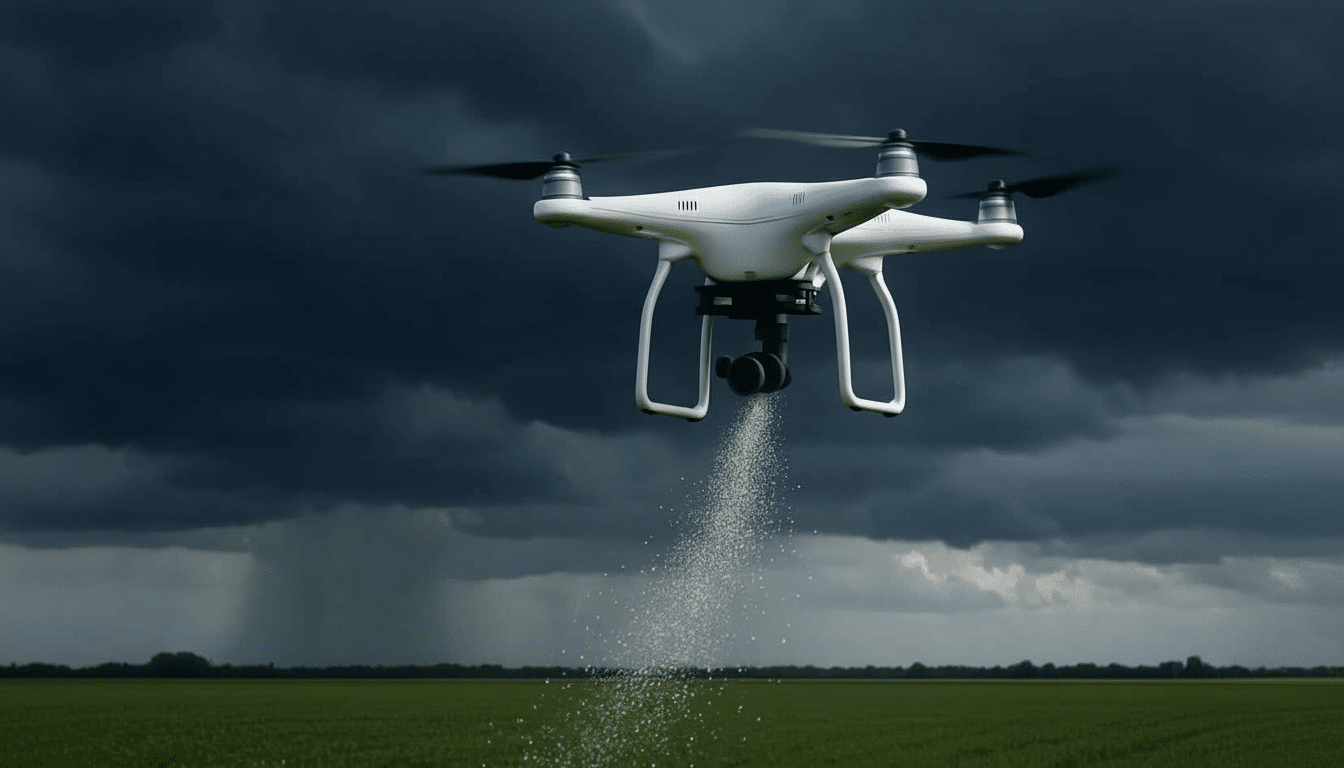A major union of pilots is urging the Federal Aviation Administration to reject a startup’s proposal to fire cloud-seeding flares from small drones, saying that it introduces an unacceptable amount of risk into controlled airspace and around communities on the ground.
Rainmaker Technology has filed applications for exemptions to operate a pyrotechnic flare dispenser containing silver iodide from its Elijah quadcopter to trigger precipitation. The airline pilots association is urging the F.A.A. to deny the request unless the company complies with much tougher requirements for safe operations, isolation of hazards and environmental review.

The decision will establish an early precedent for the way in which the regulator handles weather modification by uncrewed aircraft, a territory long dominated by crewed planes and ground-based generators in the Mountain West.
Pilots raise safety concerns in controlled airspace
Altitude is at the heart of the dispute. While a Rainmaker spokesman confirms its drones can climb to 15,000 feet above mean sea level — deep into controlled airspace used by I.F.R. traffic. Currently under Part 107 the ceiling for small drones is limited to 400 feet above ground, so hitting airline altitudes would require a stack of waivers and close coordination with ATC.
Pilot reps have thrown down the gauntlet: small aircraft, lacking certified detect-and-avoid systems, are designed to operate within clouds and “would likely lead to a significant increase in incursions with anything providing separation services if links don’t work.” They also are affected by icing, turbulence and sudden weather shifts — the very conditions seeded for operation — combining to stress small airframes and their accompanying comm links.
Another flashpoint is debris. Rainmaker suggests both “burn-in-place” flares and ejectable flares. Unions worry that ejected casings could be ingested by aircraft as foreign object debris or cause fires if they fall out of designated zones, and they’ve called on the FAA to mandate trajectory modeling, ground risk analysis, and evidence of reliable recovery or neutralization.
Toxic substances and environmental review
Federal drone regulations ban the transport of hazardous materials, and pyrotechnic flares fall into that category. To secure an exemption, applicants usually offer strong test data on in-flight containment, misfire modes and ground impact results. The union says Rainmaker’s filing is not detailed enough on how they would fail, drop safety and what happens in emergency if a flare ignites on the vehicle.
It’s not just about aviation safety: weather modification initiatives are under the microscope. Under the Weather Modification Reporting Act, operators must submit activity reports to a federal agency, while state water authorities frequently require permits and operational plans. While silver iodide has been detected at low environmental levels in long-standing state programs, the F.A.A. is being urged to demand analysis at the outset to make sure operations aren’t increasing local pollution or wildfire risk.

Rainmaker says the flights would take place over rural properties where there are landowner agreements. Pilots argue that rural airspace still contains airline and cargo corridors, military training routes and medical flights — for which procedural guardrails, geo-fencing and reliable tracking should be in place before any flare dispatches are authorized.
What drone cloud seeding changes
Cloud seeding isn’t new. These state-sponsored programs — in locations like Nevada, Colorado and Utah — rely on piloted aircraft and mountain-based generators to release a potion that encourages more snow or rain from eager clouds, often through the use of silver iodide, which mimics ice-crystal structure. Independent analyses by the National Center for Atmospheric Research and university partners show measurable precipitation from clouds treated with more exact targeting, often in the single to low double-digit percentage gains when conditions are right.
Shifting from pilots to drones may help minimize human exposure in icing and low-visibility flight profiles. It could also allow more-precise, short-notice deployments close to storm cells. But those benefits depend on solving challenges for high-altitude drones that today’s rules don’t fully accommodate: beyond visual line-of-sight operations through clouds; redundant command-and-control links; frequency interference and equipage for cooperative surveillance without conflicting with existing transponder and ADS-B policies.
Experts in weather programs note that the value of seeding relies on narrow meteorological windows and disciplined targeting. That would probably mean stringent concept-of-operations documentation, as well as real-time coordination with ATC and, quite possibly, third-party surveillance or radar services to keep uncrewed sorties predictable and trackable from the ground.
What the FAA has to decide
Regulators are evaluating classic risk-versus-benefit considerations. On one side: possible water-supply benefits and a deferral from crewed flights. On the other: pyrotechnics mounted on tiny drones, flights at airline altitudes, cloud entry and ejectable hardware falling through shared airspace.
Any approval is likely to have conditions attached. Drawing from earlier exemptions, the FAA might require altitude limits relative to terrain, restricted operating areas and times, mandatory ATC letters of agreement, robust lost-link and geofencing logic, real-time tracking available to controllers along with verifiable procedures for flare ignition and jettison/recovery.
The decision will not just be about the immediate future of Rainmaker. It will telegraph how the United States will fold weather-modification by drones into a national airspace system that is already accommodating uncrewed cargo tests, disaster-response flights and inspection swarms. And if the agency gives a thumbs up to the approach, it very well may establish a high bar for safety case evidence—and if not, expect something of a reset back to ground-based generators or crewed aircraft until uncrewed systems can prove they are safe operators within the clouds they wish to seed.

